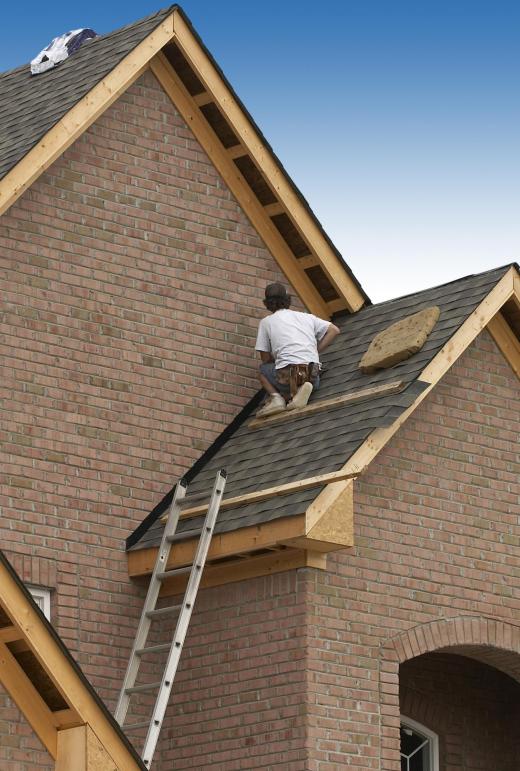A roofing hoist is a device designed to lift heavy roofing materials from the ground onto the roof of a building safely and quickly. A few different types of roofing hoist exist; the two most common designs are the ladder hoist and the swing beam hoist. The ladder model requires a metal ladder on which to operate. The swing beam model mounts directly to the roof of a building and uses a pulley system to lift materials to the roof. Each model prevents the roofers from having to carry shingles and other heavy materials by hand up the ladder.
The ladder roofing hoist is used far more often than other models. A normal aluminum ladder can be used with this system in most cases, as the hoist itself mounts to the uprights of the ladder. It is lifted or lowered using a crank system or a motorized lift system that utilizes cables to pull the heavy loads. The size of the lift, the power of the engine, and the type of ladder being used will dictate how much weight can be lifted at any given time. Just about all manufacturers will list the weight capacity of the system clearly on the machine.

One of the biggest disadvantages of the ladder roofing hoist system is its reliance on the stability of the ladder. The roofer will need to ensure the ladder is properly positioned to avoid tipping or wobbling, though sometimes other factors aside from the roofer's initial placement can affect the stability of the unit. If the ladder is unstable, the materials being lifted may also become unstable and fall, potentially leading to damage of the materials or the ground, or to injury of any bystanders on the ground.
A swing beam roofing hoist is suitable for lifting heavier loads to greater heights. Such a system is usually used on larger buildings instead of on residential homes, and this system is generally used on flat roofs rather than peaked ones, though not exclusively so. One inherent problem with this design is the need to haul the components of this often large machine onto a rooftop. This can be difficult, and set-up of the machine can take some time. Once it is set up, however, the swing beam roofing hoist will be able to haul extremely heavy loads of materials, and it will generally be able to lift loads to a greater height.
